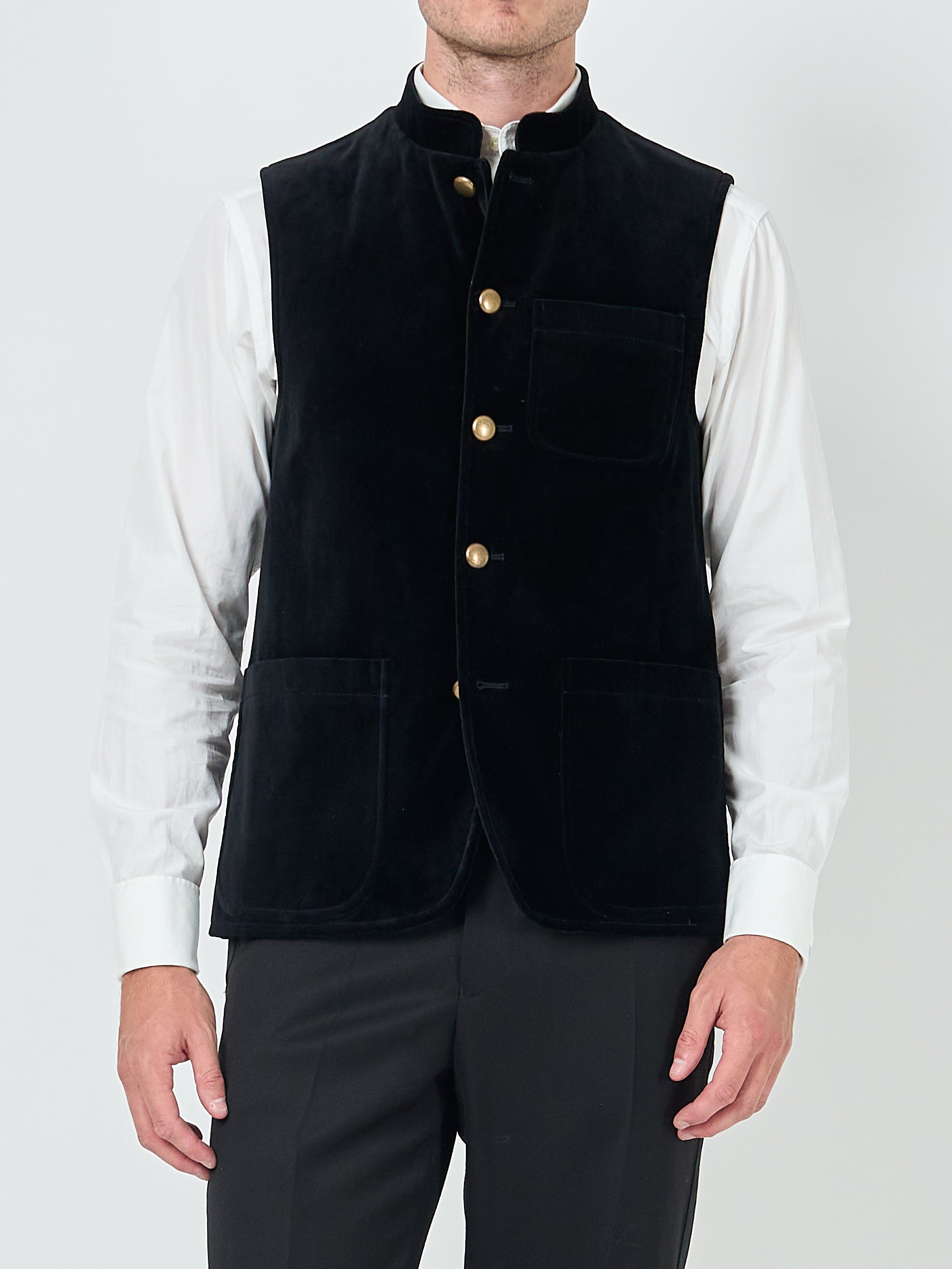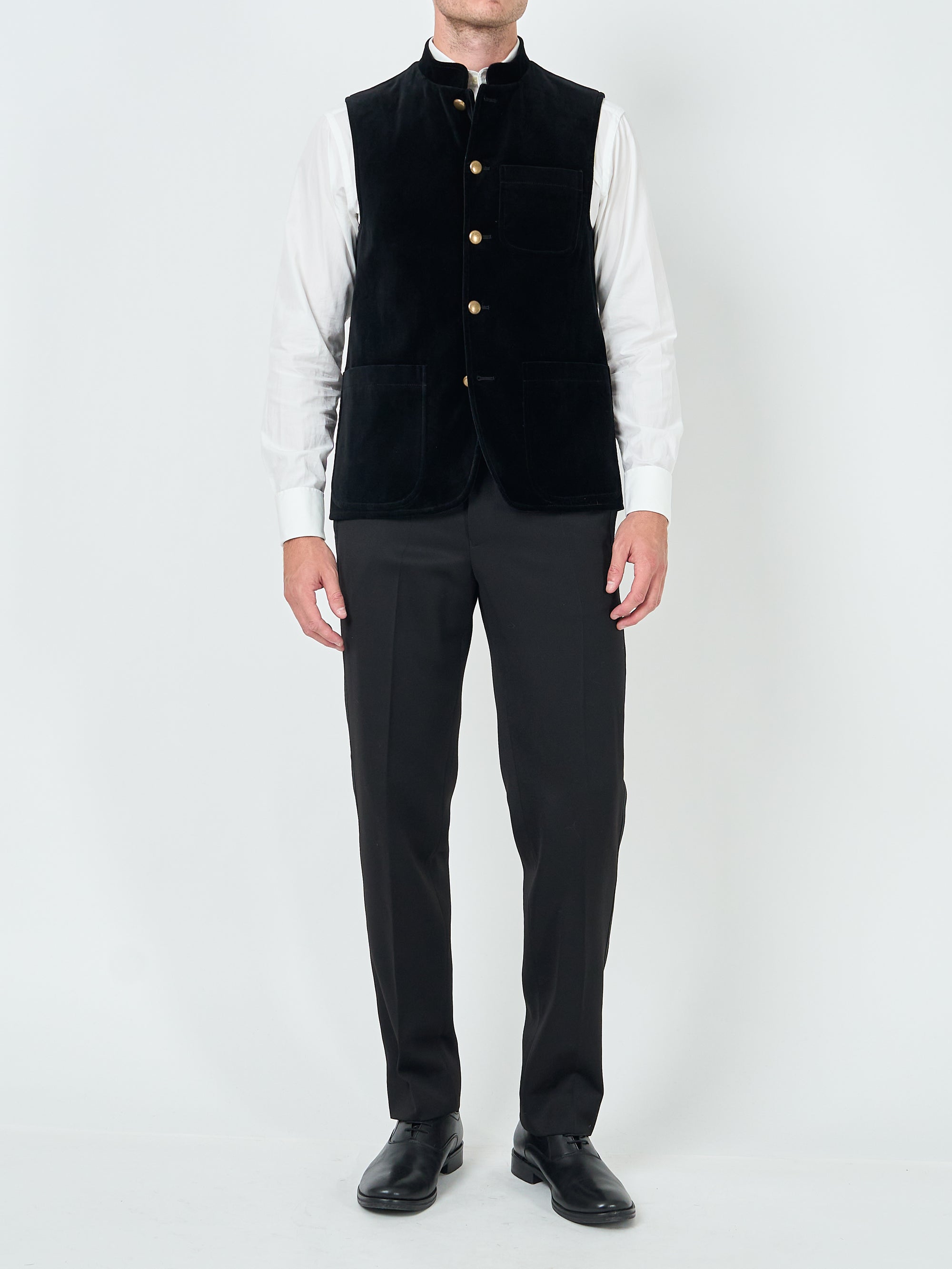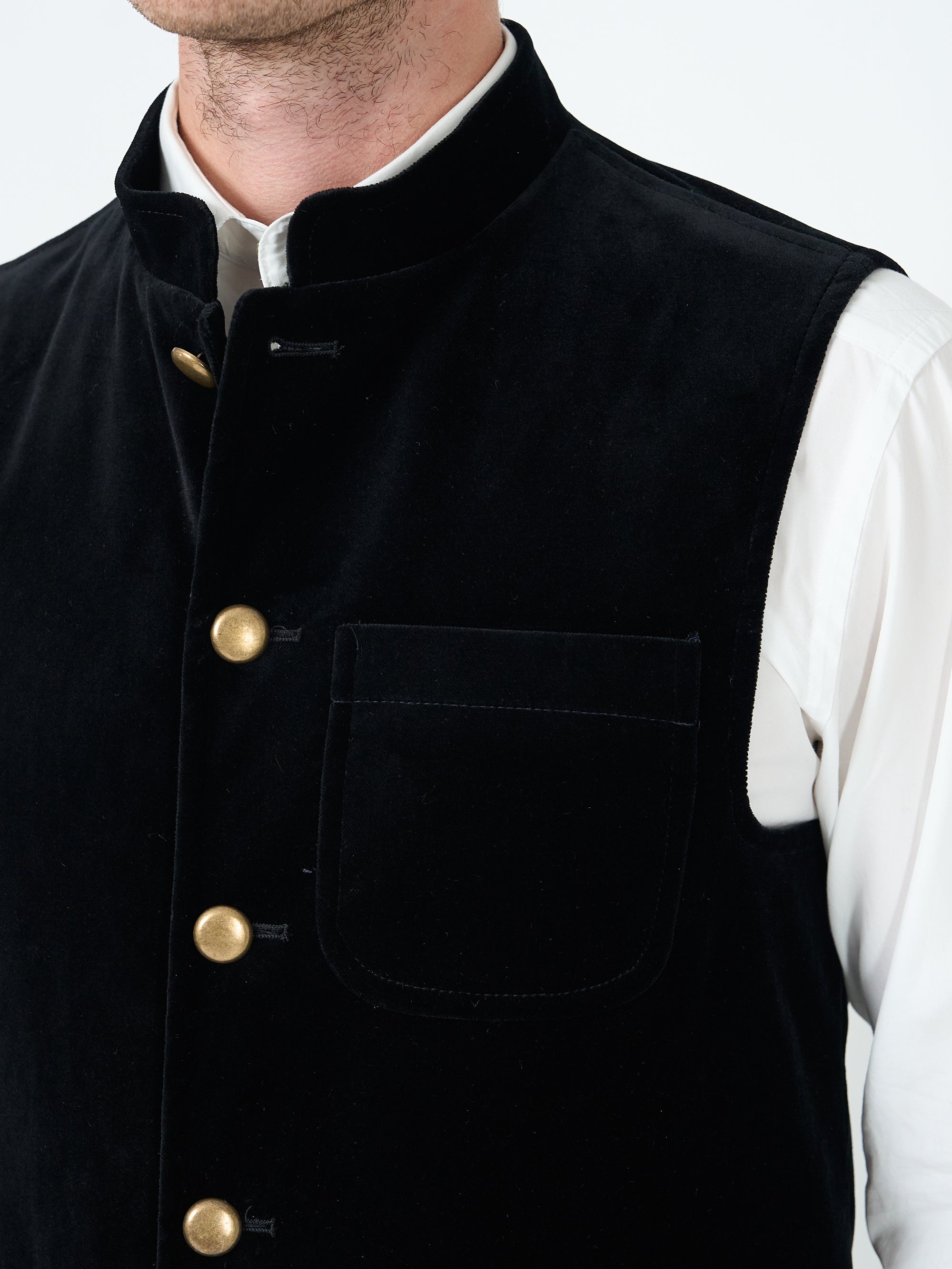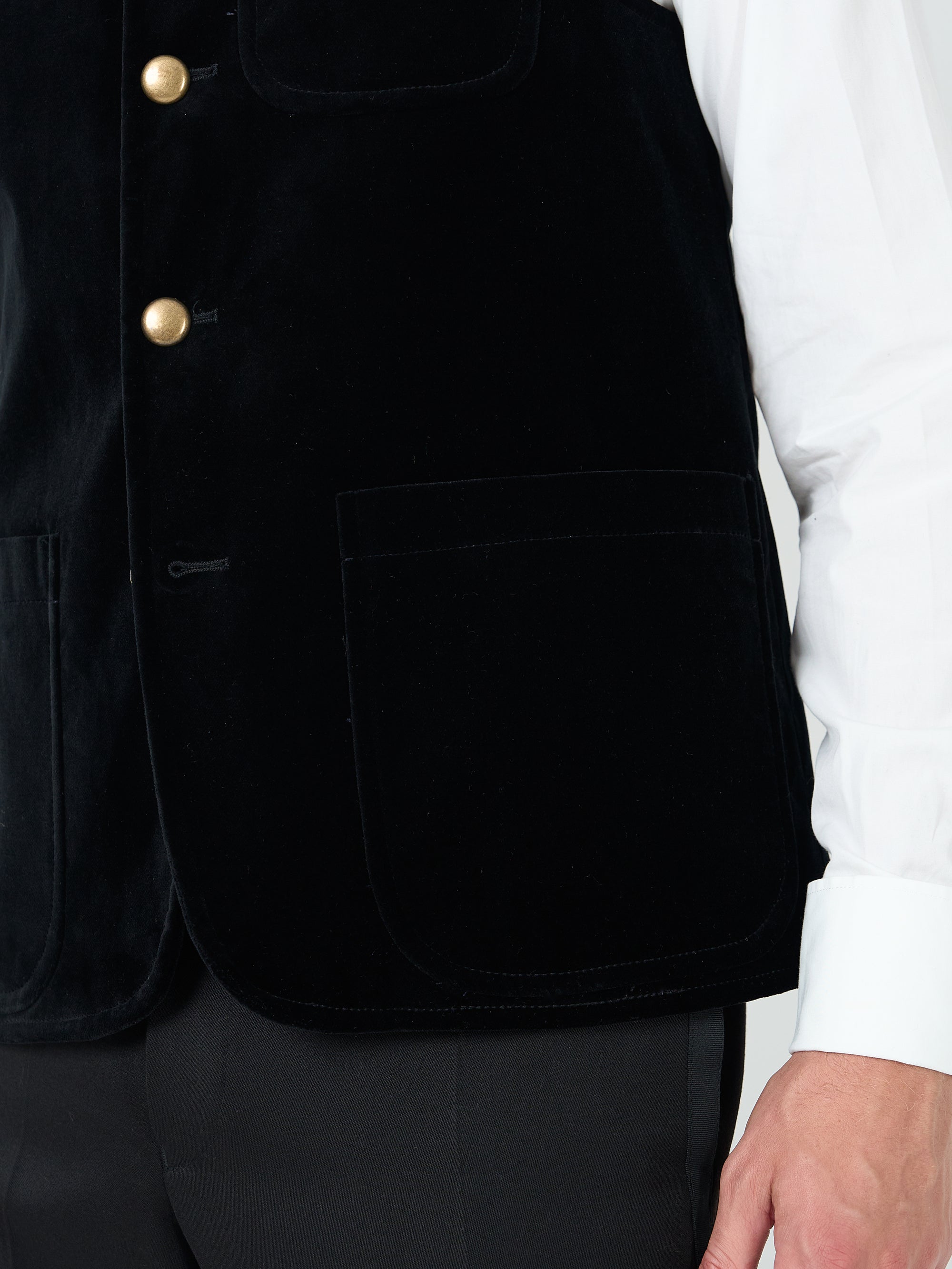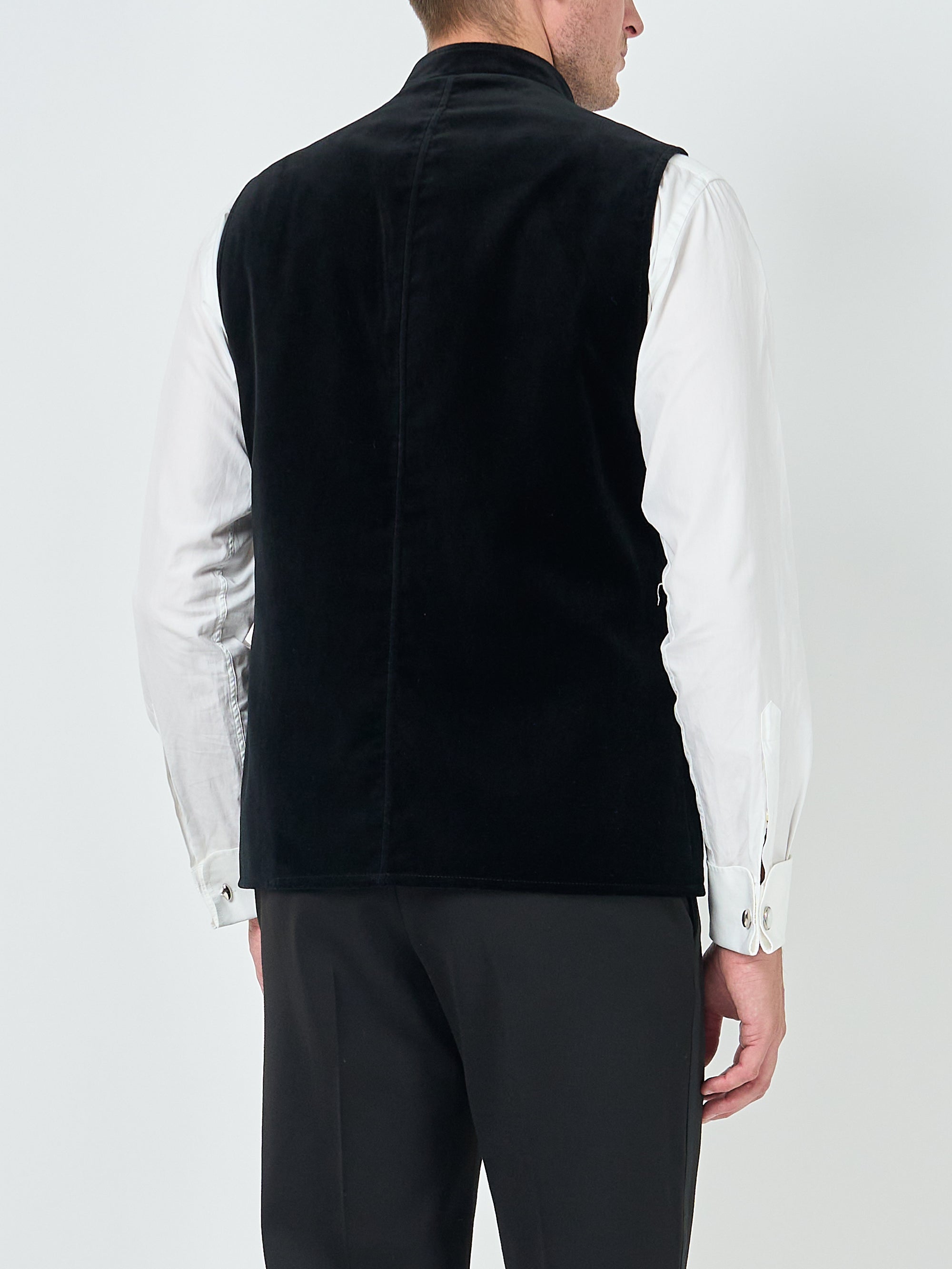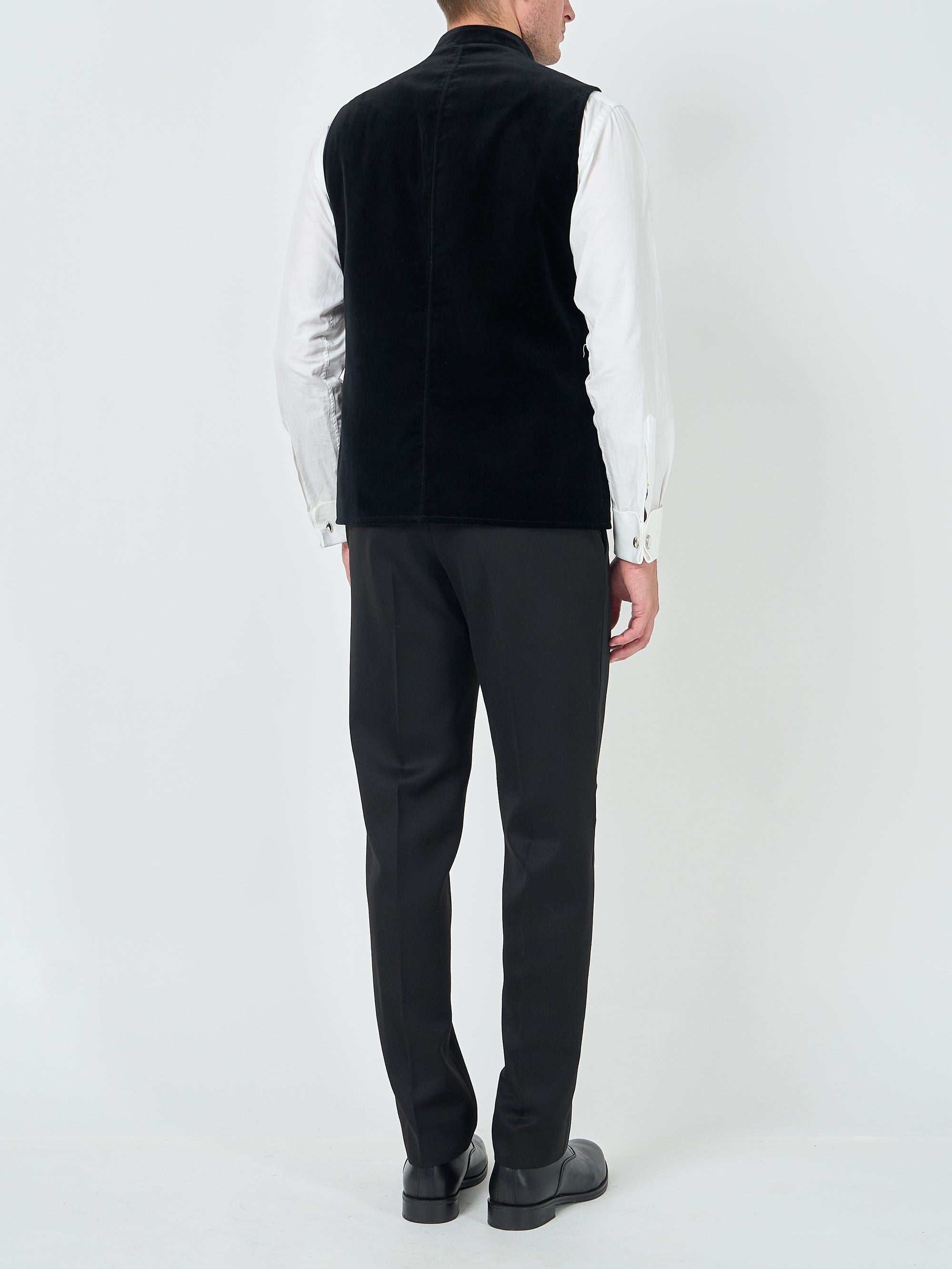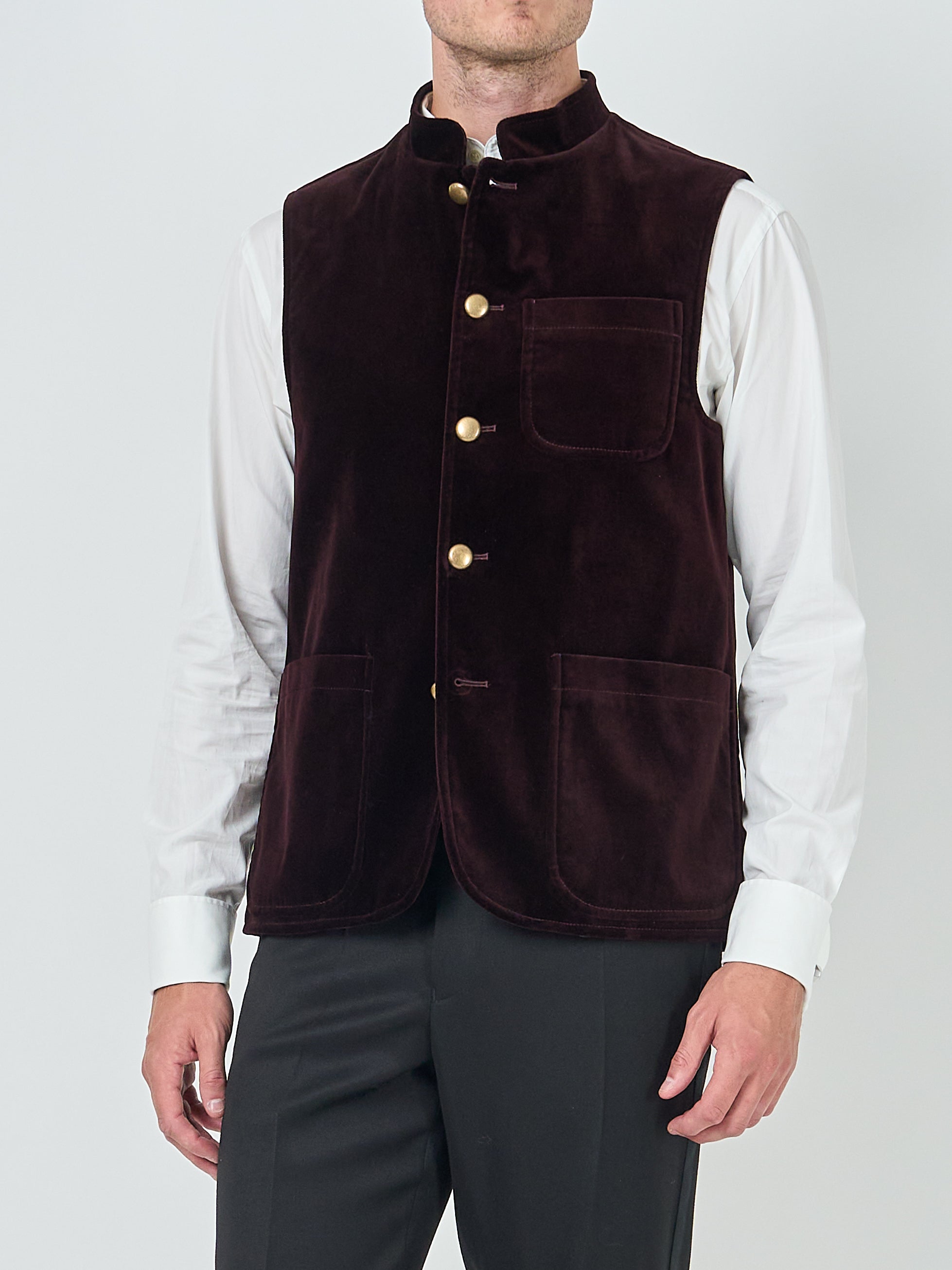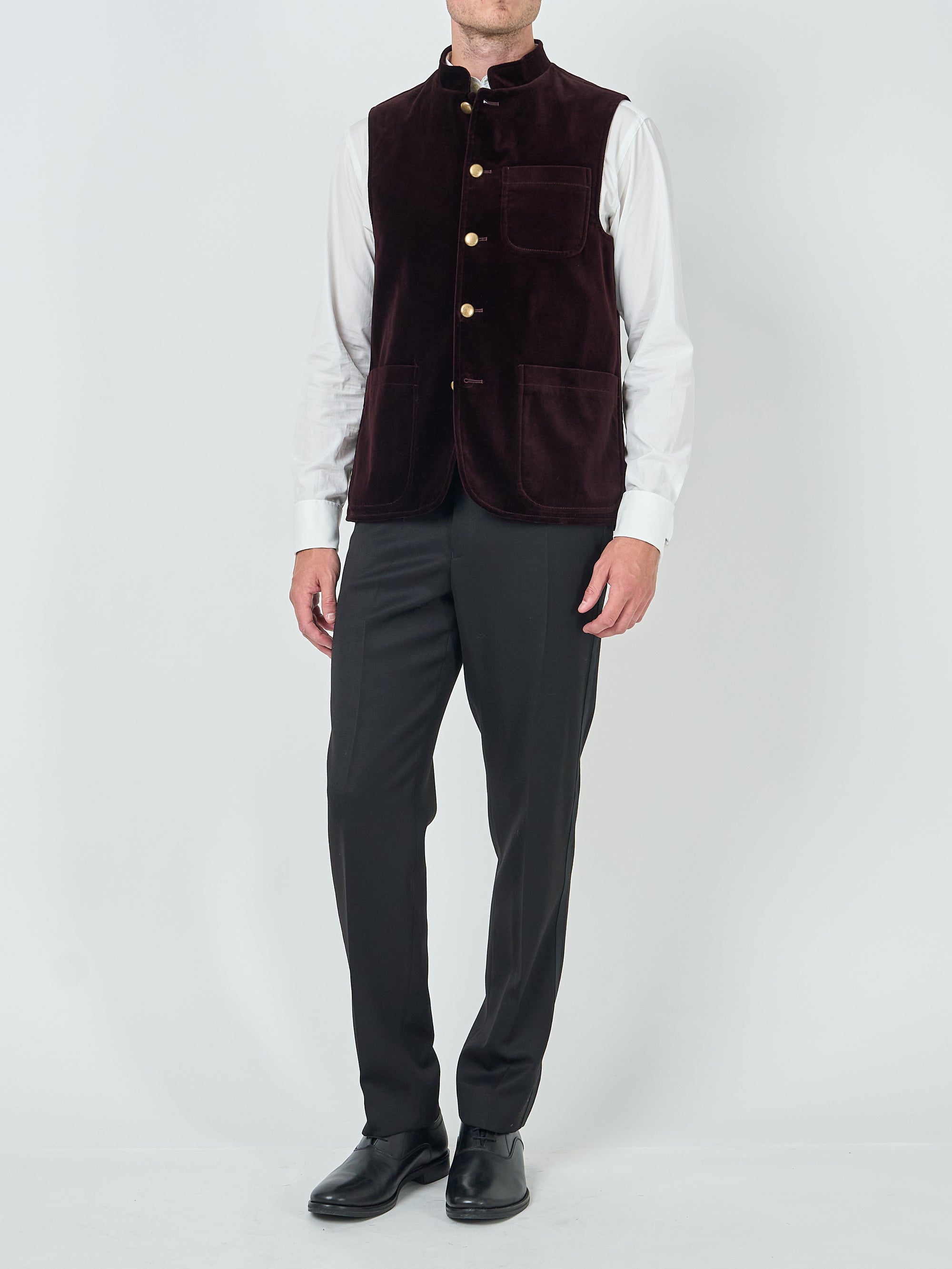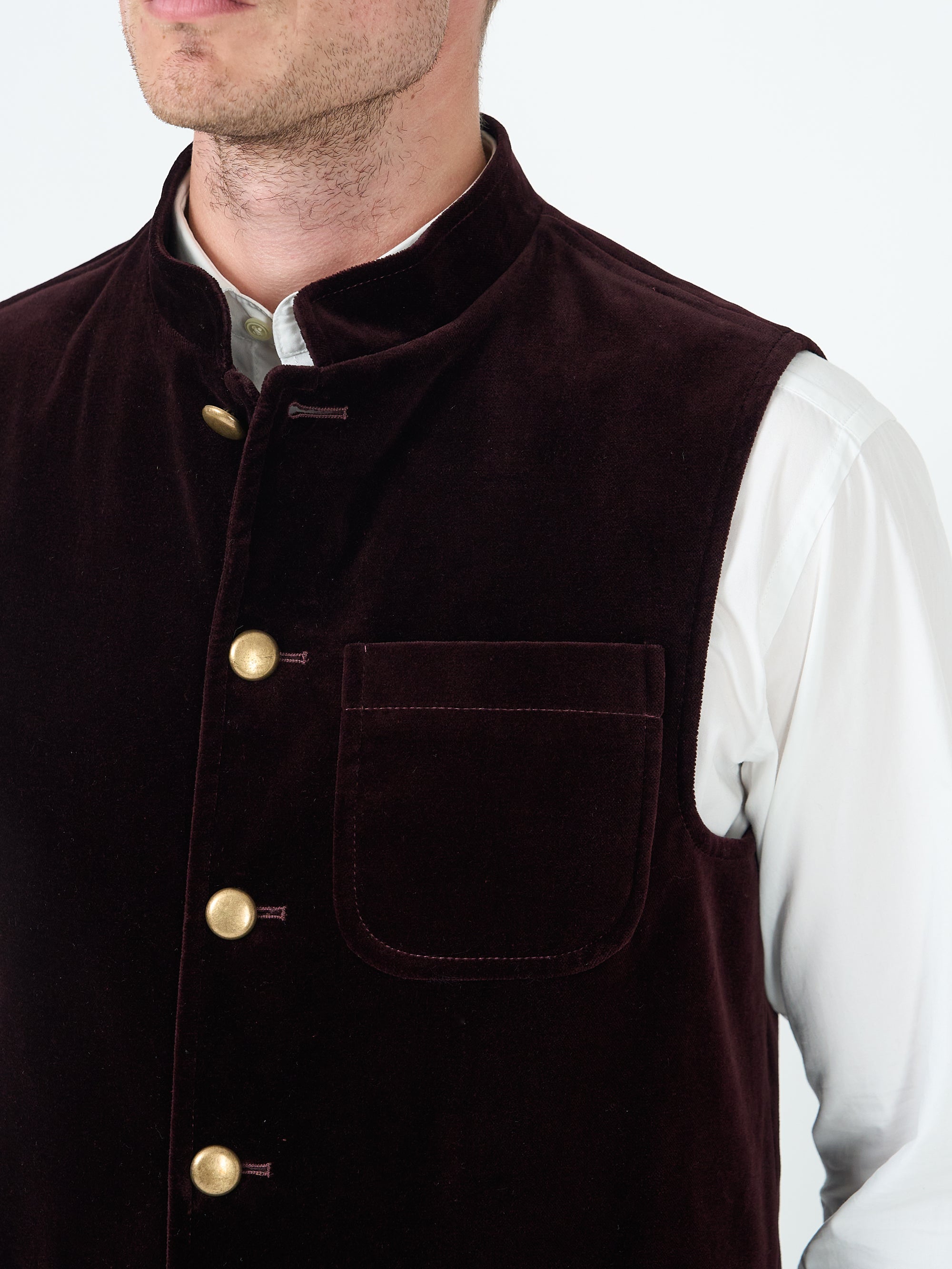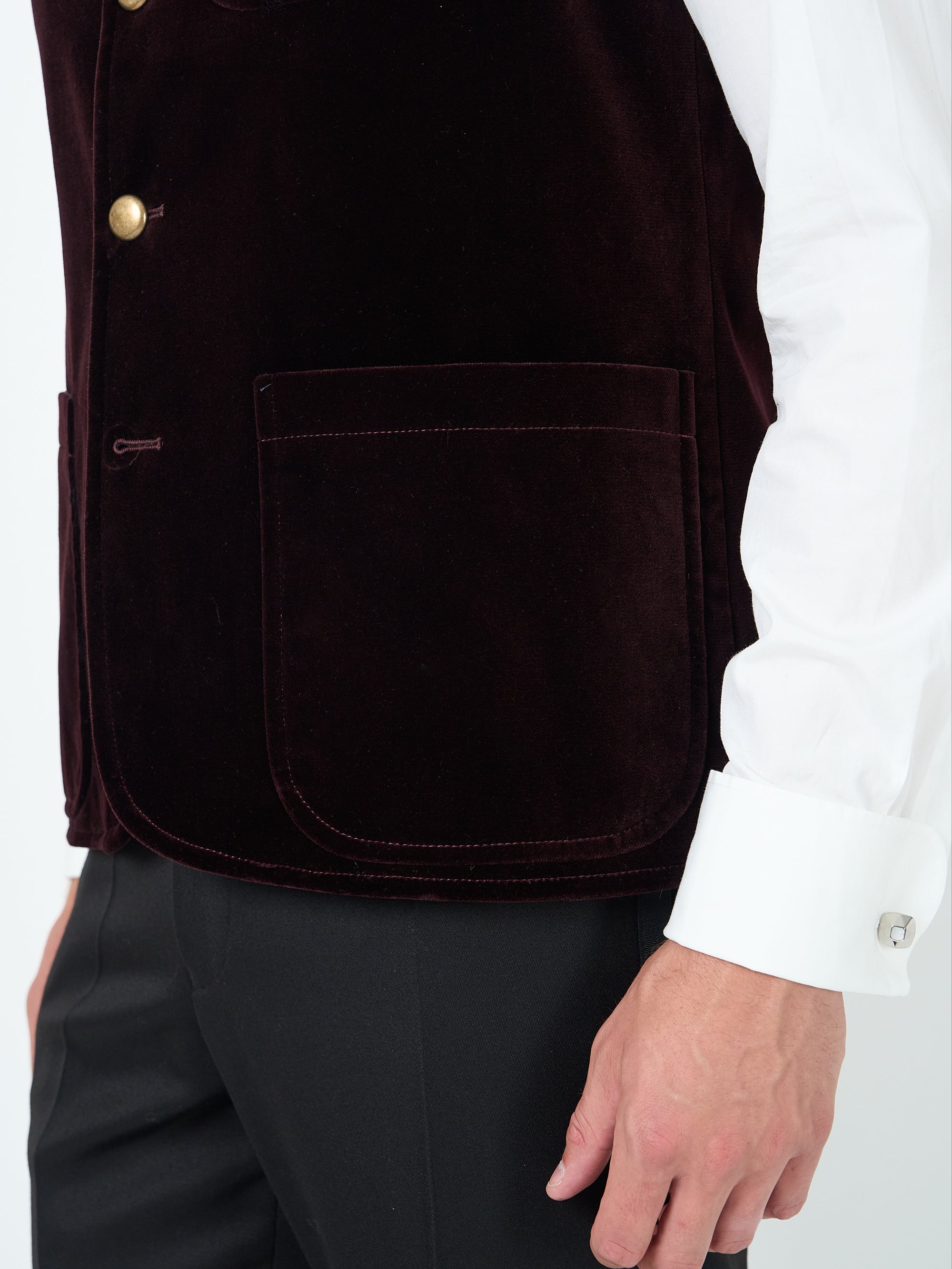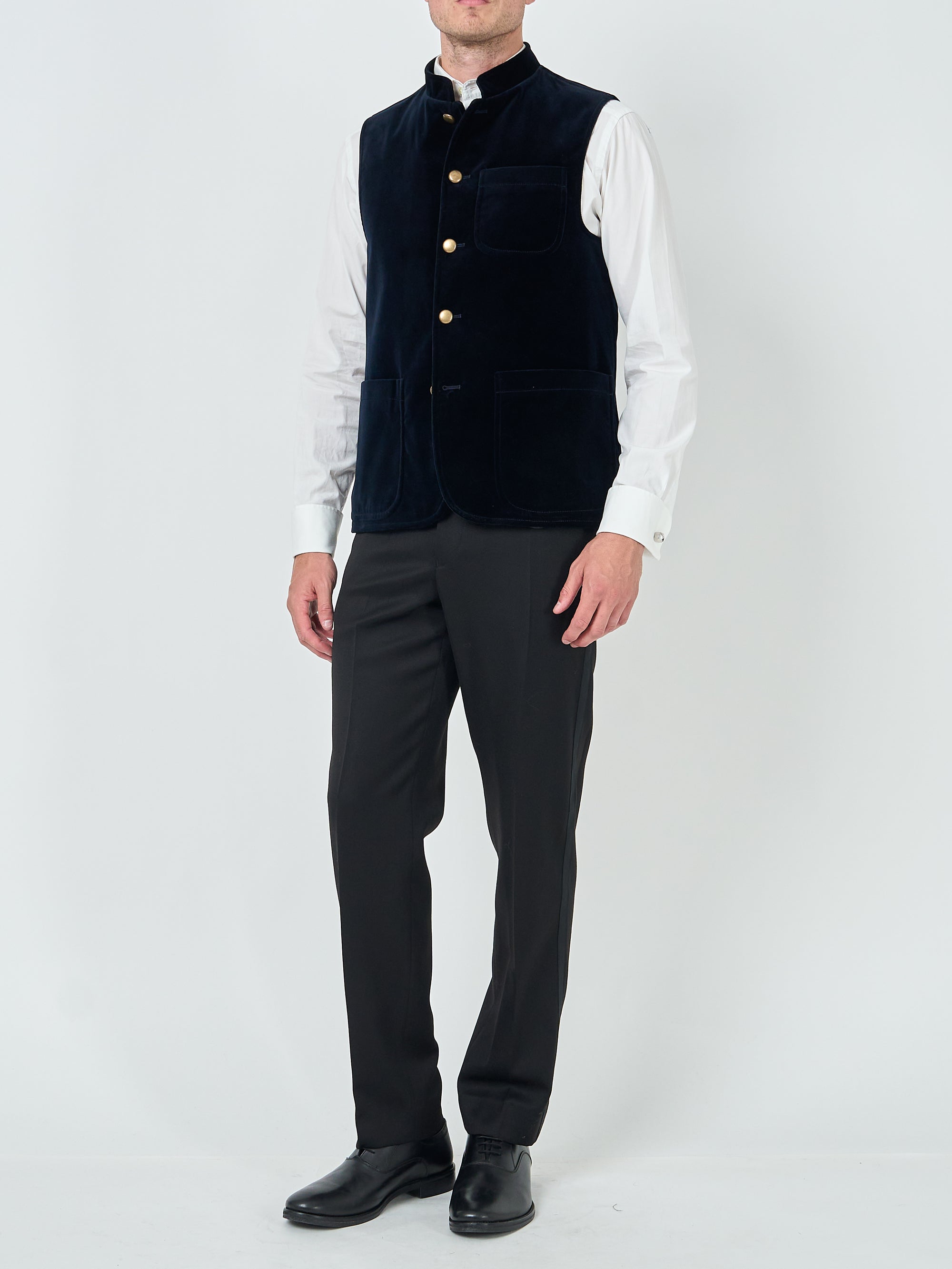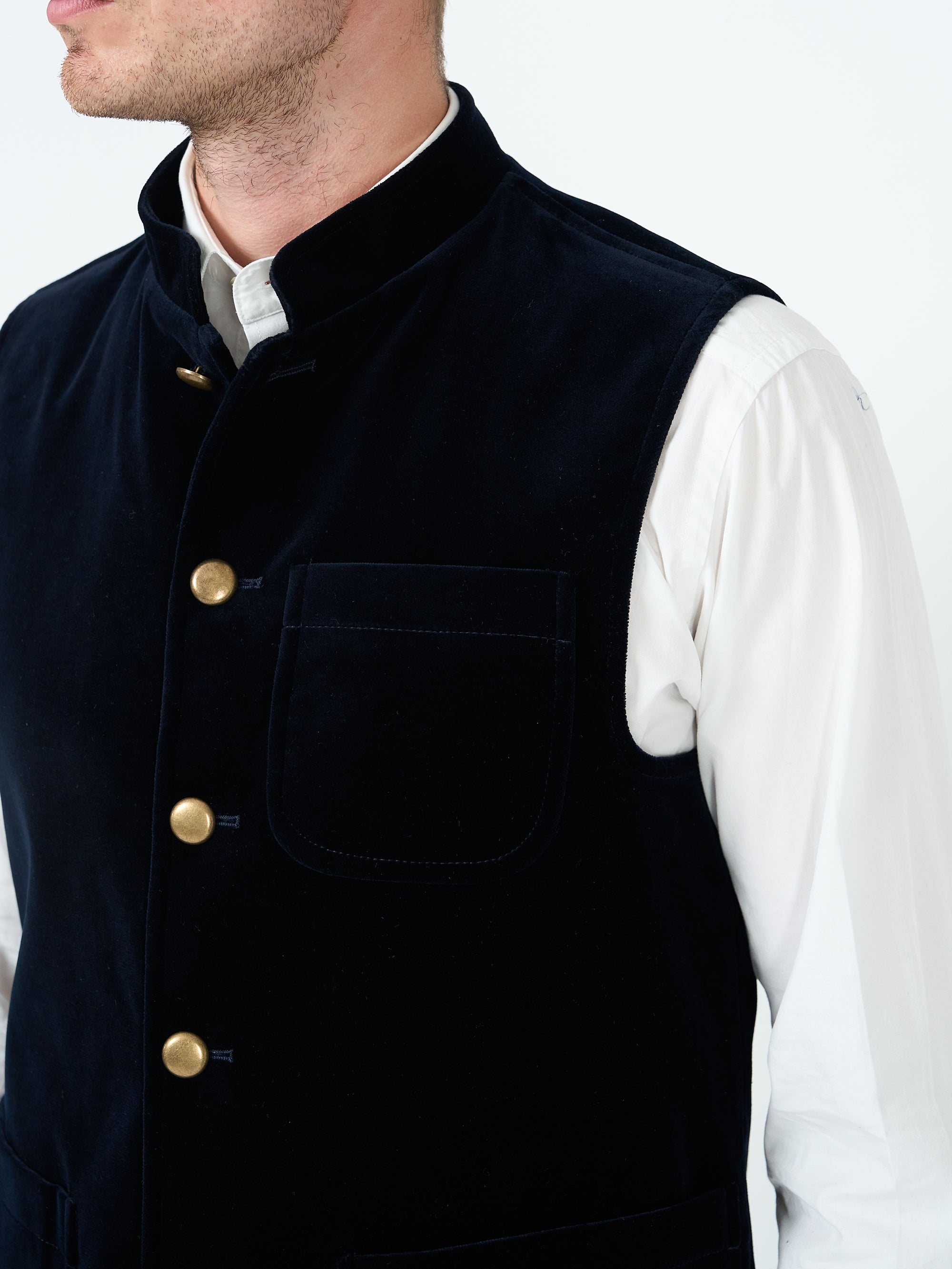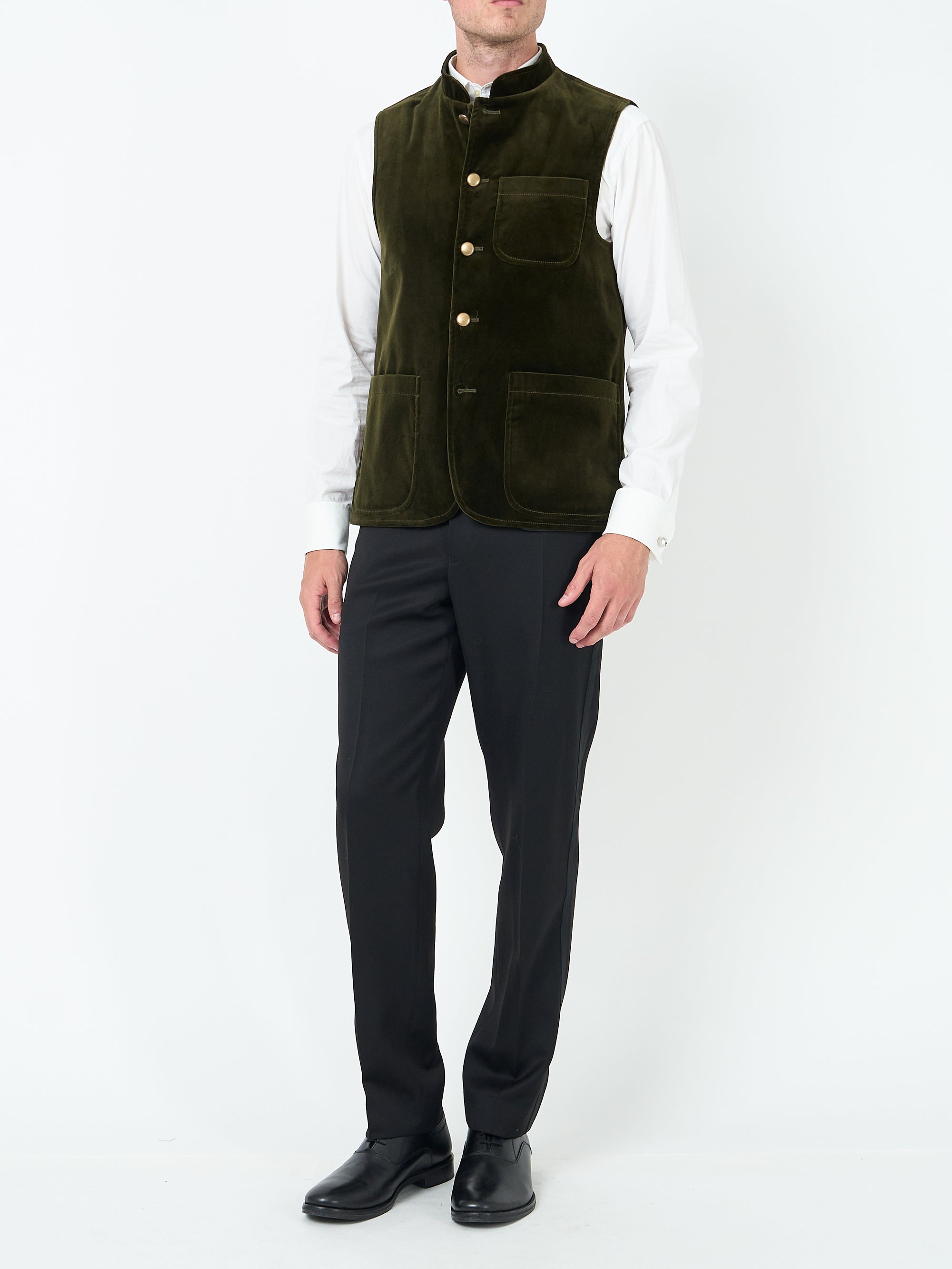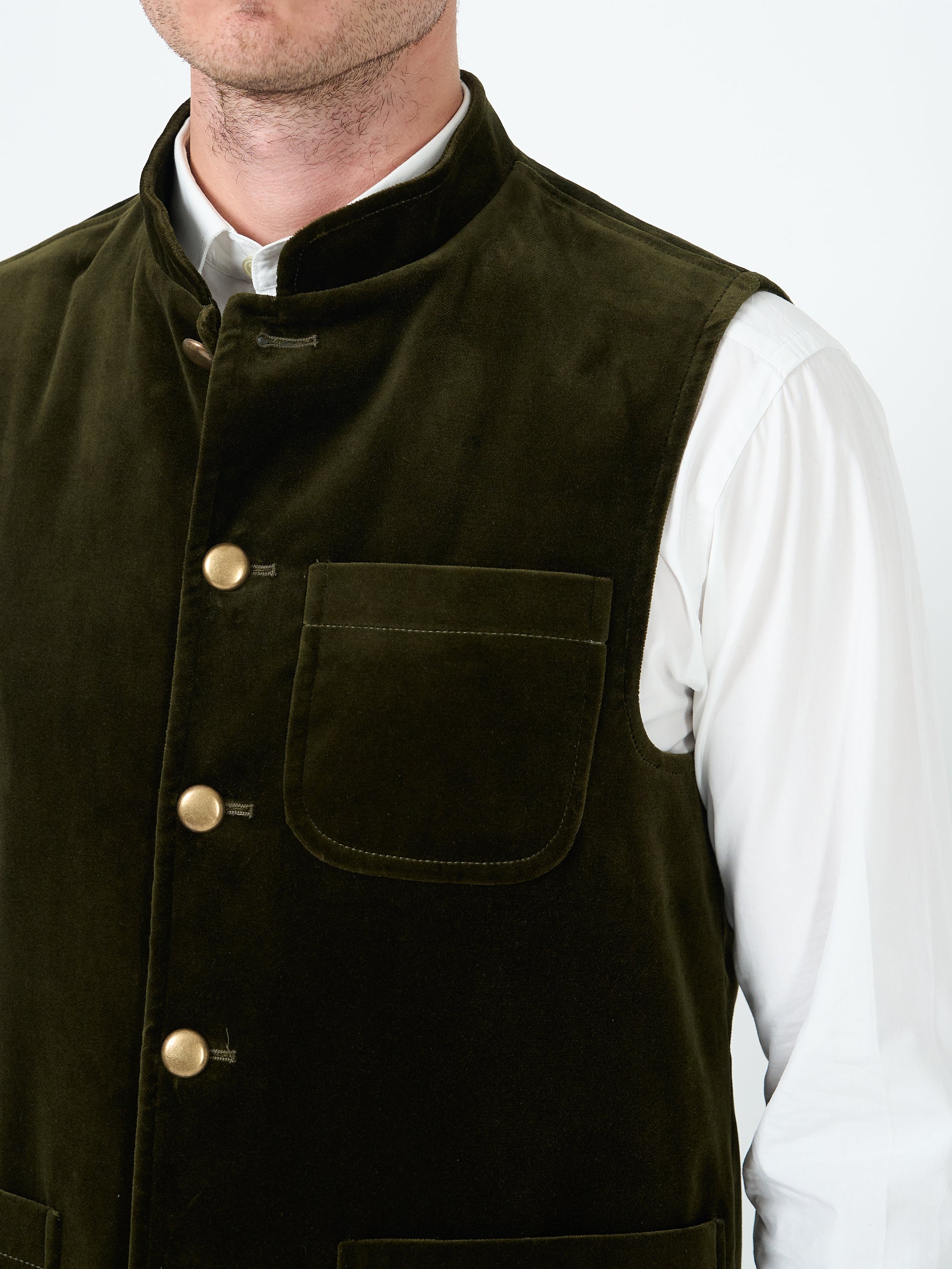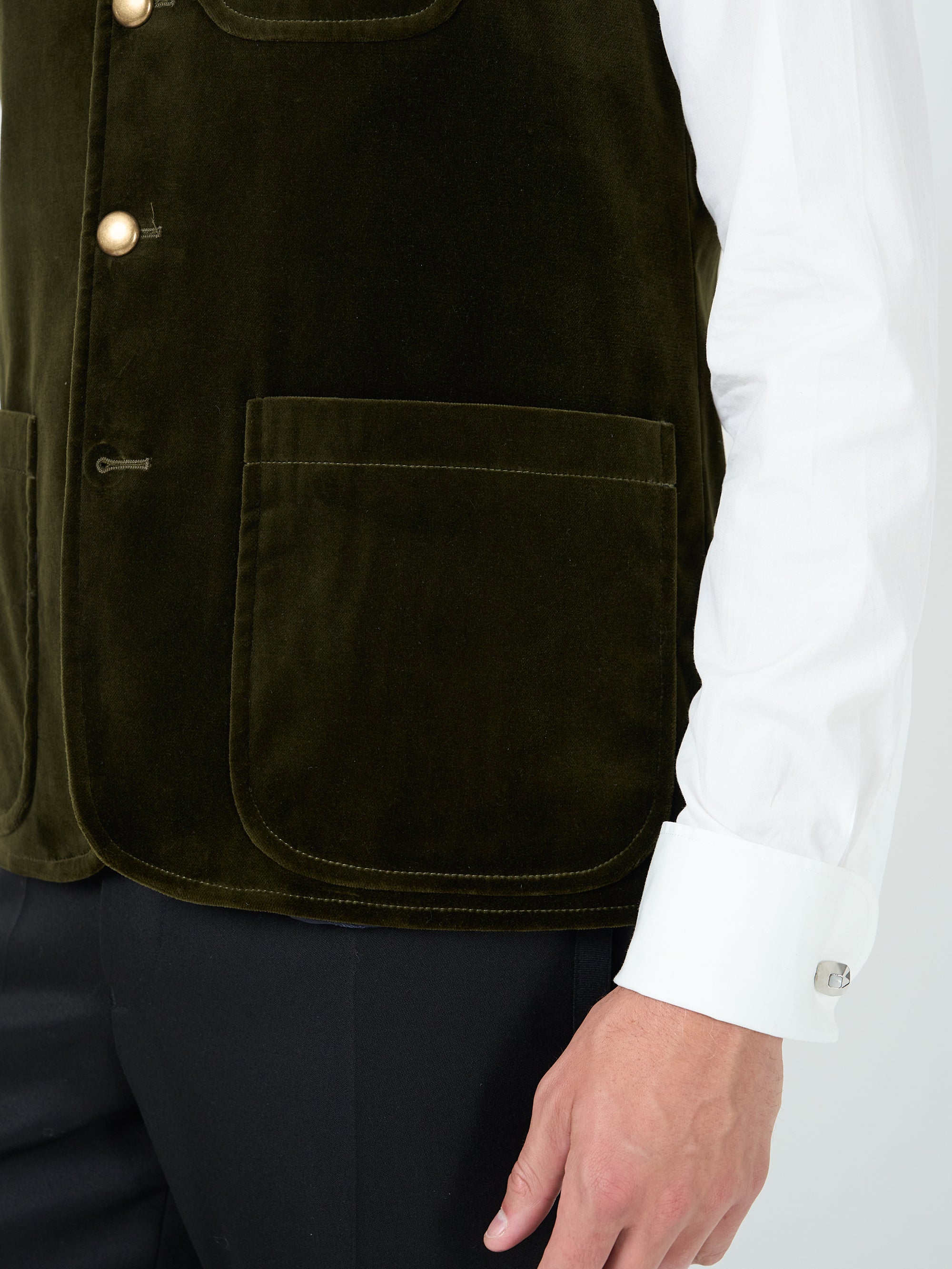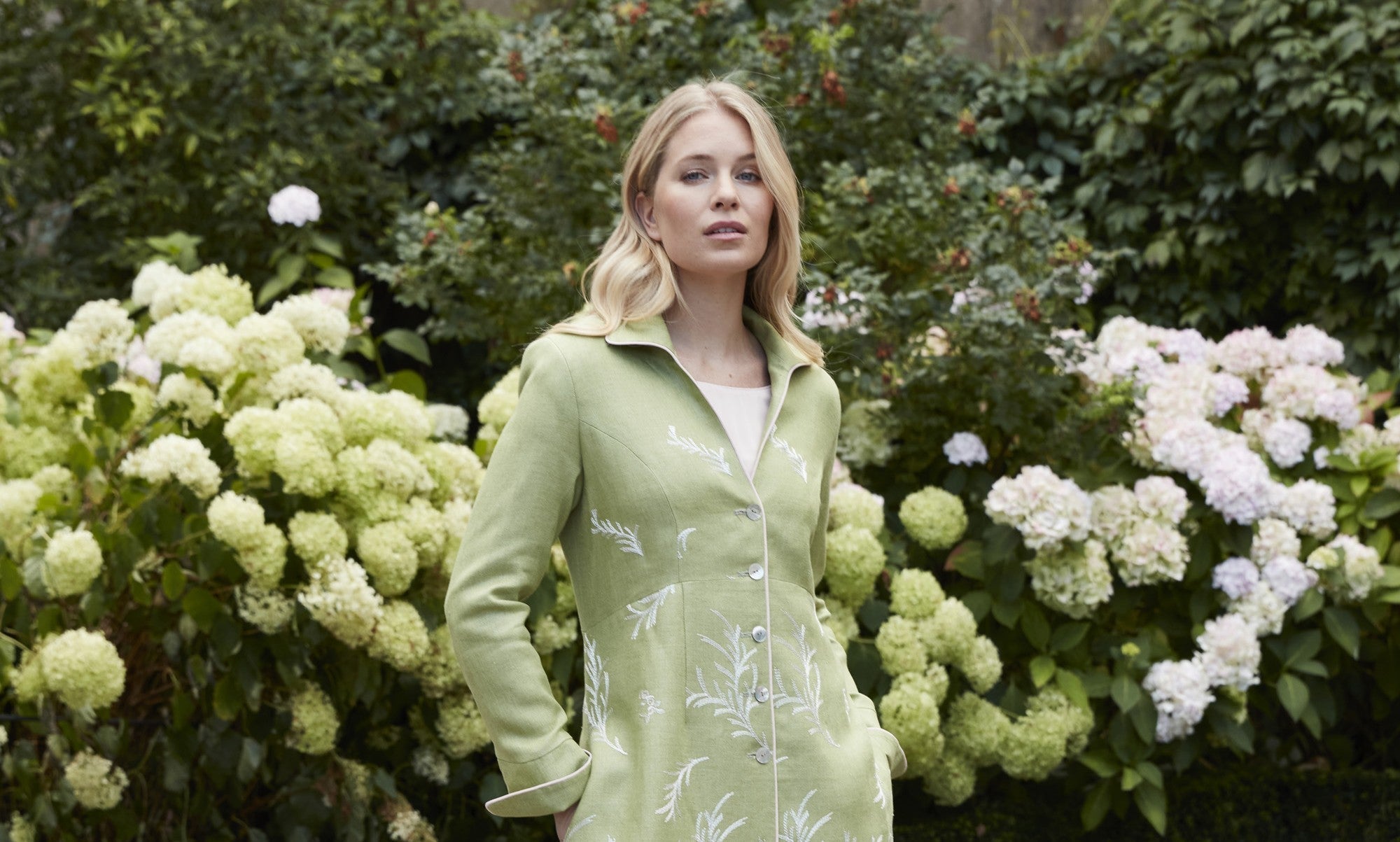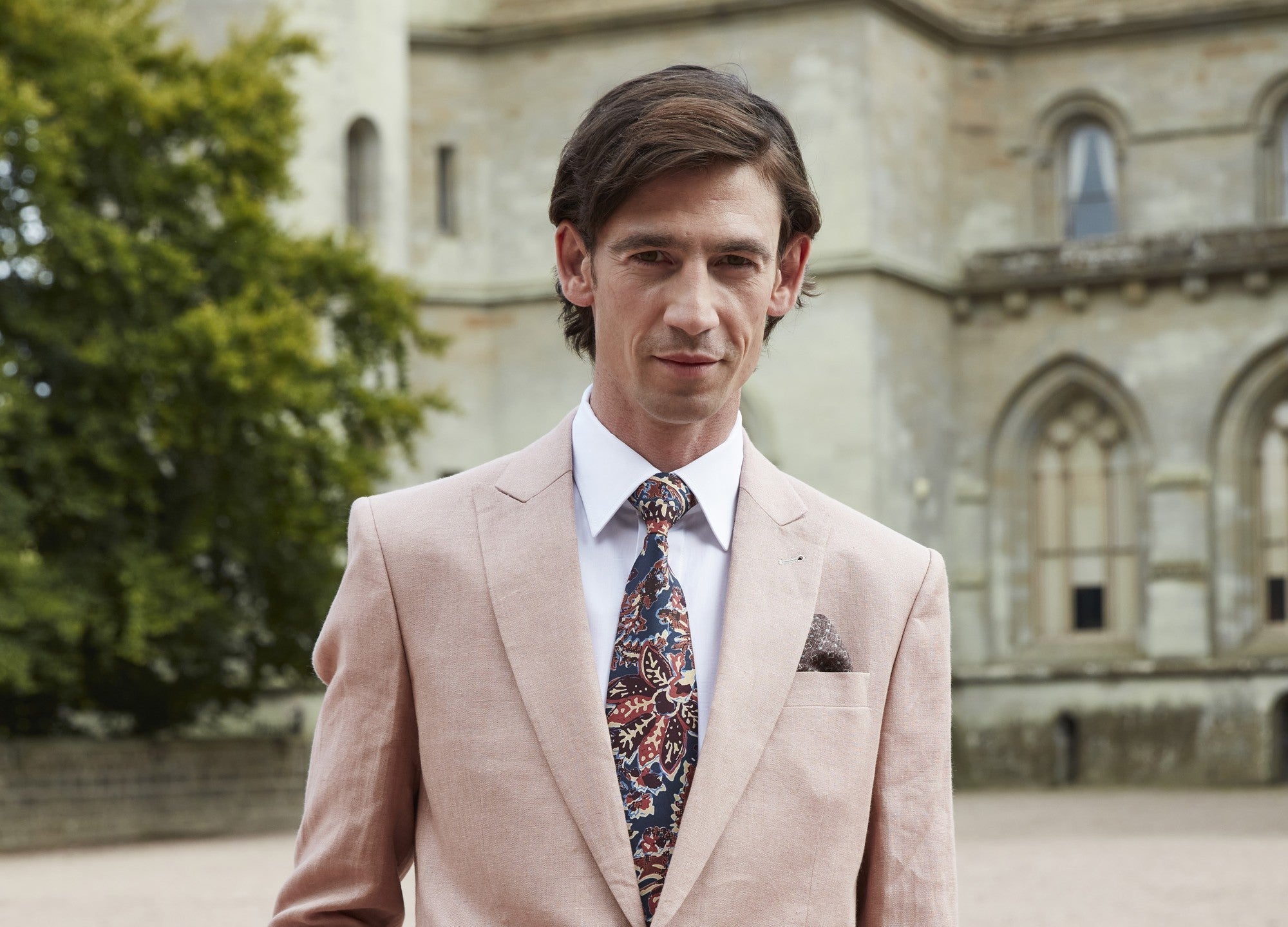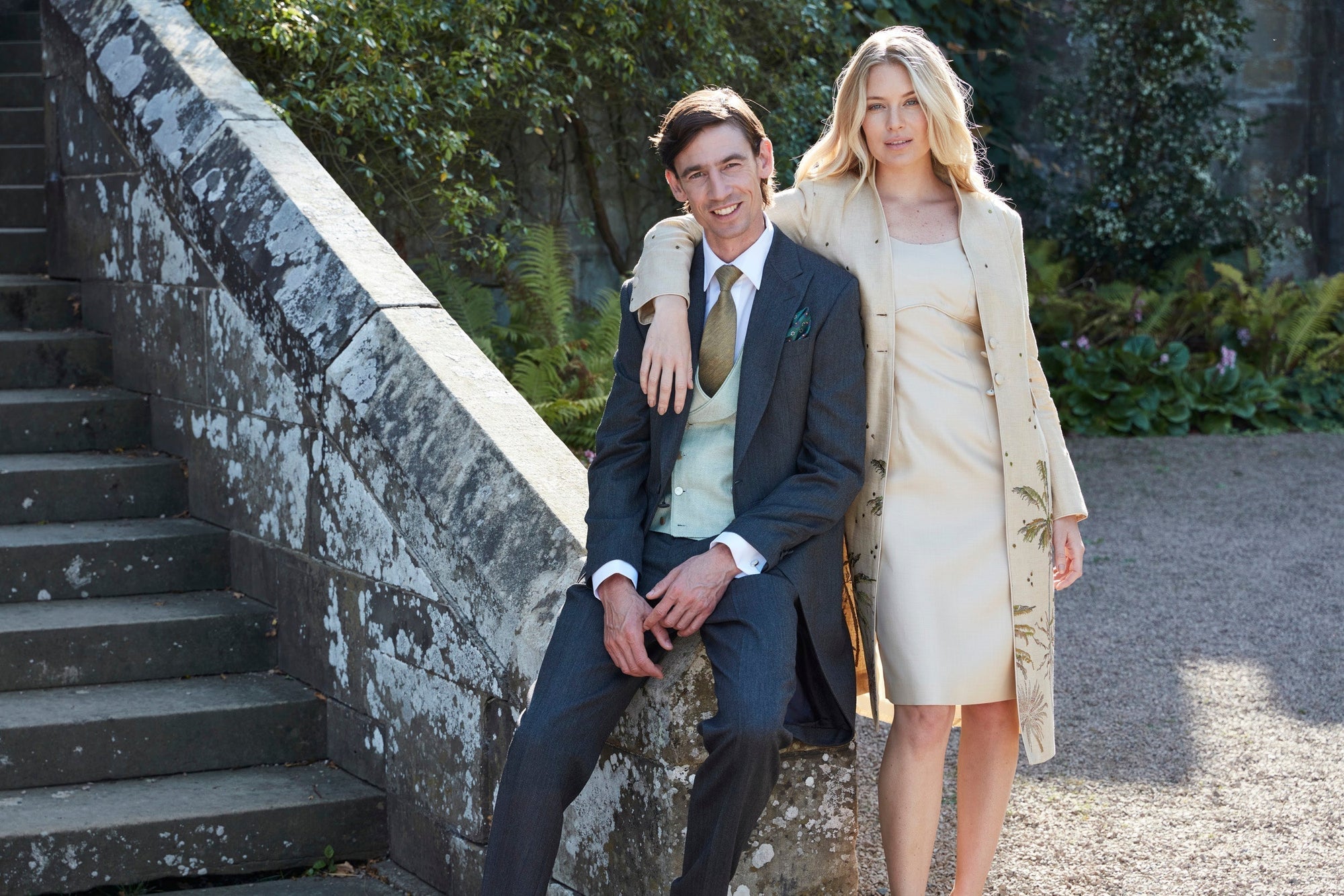If you've been a Favourbrook customer, you'll know that we love a bit of tradition when it comes to sartorial style, but that we also can't help ourselves bending the rules! One such garment that we've created this season is a velvet gilet, that is equal parts tradition, utility, and modern elegance. The fact is, say the word 'gilet' in 2024 and most people will think you're talking about the padded sleeveless vest one often sees in the city. There is a good anecdotal story I was once told about how said city vests came into popularity - apparently the billionaire hedge fund manager Steve Cohen used to maintain a freezing cold trading floor because he felt that it kept his traders at their most alert. Thus they started coming to work in padded vests. Given they were the top dogs on Wall Street, the trend quickly spread to other trading firms, regardless of their office air con settings!
A Sartorial Gilet? The Garment You Didn't Know You Needed
Anyway, we digress! Predictably, our new gilets are not of the shiny, padded variety, but have much more in common with the early history of gilets, which were once used as a means of expressing taste and wealth. Ours have been beautifully crafted in rich cotton velvet and feature a Nehru-like collar, making them elegance, versatile, and of course warm. It's one of those garments that you don't really think you need, until of course you try it on, realise it can be worn in so many ways, and then wonder how you've ever got by without one!

The History of the Gilet
The gilet’s origins can be traced back to 17th-century Europe, where it was born as a formal waistcoat-like garment. The word “gilet” itself is derived from the French term for a sleeveless jacket, although its historical evolution shares much with the English waistcoat. King Charles II of England is often credited with popularizing the waistcoat in 1666 as part of the "vest" he introduced to the court - a garment with long sleeves and tailored from rich, elaborate fabrics. This evolved into a slimmer, sleeveless version of the waistcoat by the late 18th century. The key distinguishing feature that started to define the gilet was its functional use: a light layering piece without the bulk of sleeves, designed to offer warmth without restricting movement. In this early period, the gilet was primarily a tailored piece, made from luxurious fabrics such as silks, brocades, and velvets, often heavily embroidered or adorned with detailed patterns, making it a sartorial statement for the aristocracy, especially in France.
At the turn of the 20th century, the gilet experienced a decline in formalwear as the silhouette of menswear continued to simplify. The rise of the lounge suit began to replace the need for layered formal attire. By the 1960s and 1970s, the gilet found a new life in casualwear, particularly in outdoor and country attire. Quilted gilets, otherwise known as 'bodywarmers' became popular in sporting contexts such as hunting or shooting. These outdoor gilets were typically made from water-resistant fabrics and filled with down or synthetic materials, adapting the original design for functional use in harsher climates.

This shift toward casualwear did not entirely erase the gilet's presence in formal menswear, however. During the 1980s, a revival of three-piece suits in some fashion circles brought back the gilet as part of formal tailoring. British tailoring, especially on Savile Row, retained the gilet’s place as part of the traditional suit. The silhouette was sharp and fitted, offering an extra layer of sartorial polish. Italian tailoring, known for its softer structure and lighter fabrics, also embraced the gilet, especially in lighter materials like linen and cotton, making it a stylish piece for warmer climates.
Unlike the modern waistcoat, which is more a decorative garment, our gilets are very much functional thanks to the warm cotton velvet fabric. These are also much longer than a traditional waistcoat, being of similar length to a standard jacket, and thus they function much like one, only without sleeves. We've been styling them with smart-casual shirts and tailored trousers to create relaxed yet sophisticated looks that are perfect for attending a smart lunch or evening function in. They are great for elevating your weekend looks too, especially during the warmer autumn days when you want to wear a lightweight overcoat. Come down to our Pall Mall flagship store and try one on yourself. You won't regret it.

